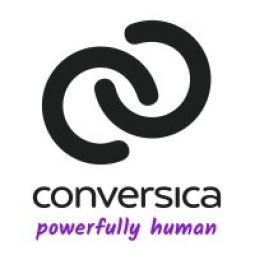Boosting Revenue and Productivity in Off-Season with IoT: A Case Study of a Single-Family Home Rental Company

Technology Category
- Analytics & Modeling - Real Time Analytics
- Application Infrastructure & Middleware - Event-Driven Application
Applicable Industries
- Buildings
Applicable Functions
- Maintenance
- Sales & Marketing
Use Cases
- Inventory Management
- Real-Time Location System (RTLS)
Services
- System Integration
About The Customer
The customer is a large provider of single-family home rentals in multiple U.S. markets. Unlike typical real estate brokers, the company not only manages tens of thousands of properties but also owns the homes. The company has a national team of 27 inside sales agents who are tasked with managing anywhere between 10,000 and 20,000 leads per month. These leads are generated by traffic to the company’s website, Trulia, and other online real estate listing sites. The company had set ambitious corporate goals to drive down customer acquisition costs and create 6,000 rental opportunities by the second quarter of the year.
The Challenge
The customer, a large provider of single-family home rentals in multiple U.S. markets, was facing a challenge to increase incremental revenue and productivity during the off-season. The company manages and owns tens of thousands of properties and has a national team of 27 inside sales agents who manage between 10,000 and 20,000 leads per month. These leads are generated by traffic to the company’s website, Trulia, and other online real estate listing sites. Despite using Marketo’s marketing automation suite for driving inbound leads and scoring them, along with Salesforce for tracking and managing sales activity, the sales teams lacked sufficient information to engage, qualify, and convert the leads. The company had set two key corporate goals: to reduce customer acquisition costs and create 6,000 rental opportunities by the second quarter of the year.
The Solution
The company integrated Conversica's sales conversion management software with Marketo and Salesforce applications. The Conversica persona, named Jeffrey, was implemented in less than a week. Conversica, being a cloud-based application, required no updates or maintenance. It integrated with Marketo to automate processes across the entire sales cycle, from demand generation through contact, engagement, conversion, and follow-up. Marketo drove leads for the company by tracking the activity or click-throughs of visitors to the company’s website and scored the leads based on the sections of the website accessed. Conversica qualified high scoring leads and determined the reasons for their activity and quick move. The company could quickly address red flags and weed out undesirable customers before agents spent a lot of time engaging them. Conversica's sales conversion management software worked seamlessly with Marketo, complementing the generalized one-way email communication with personalized two-way emails designed to get leads to respond with more information.
Operational Impact
Quantitative Benefit

Case Study missing?
Start adding your own!
Register with your work email and create a new case study profile for your business.
Related Case Studies.

Case Study
Energy Saving & Power Monitoring System
Recently a university in Taiwan was experiencing dramatic power usage increases due to its growing number of campus buildings and students. Aiming to analyze their power consumption and increase their power efficiency across 52 buildings, the university wanted to build a power management system utilizing web-based hardware and software. With these goals in mind, they contacted Advantech to help them develop their system and provide them with the means to save energy in the years to come.

Case Study
Intelligent Building Automation System and Energy Saving Solution
One of the most difficult problems facing the world is conserving energy in buildings. However, it is not easy to have a cost-effective solution to reduce energy usage in a building. One solution for saving energy is to implement an intelligent building automation system (BAS) which can be controlled according to its schedule. In Indonesia a large university with a five floor building and 22 classrooms wanted to save the amount of energy being used.

Case Study
Powering Smart Home Automation solutions with IoT for Energy conservation
Many industry leaders that offer Smart Energy Management products & solutions face challenges including:How to build a scalable platform that can automatically scale-up to on-board ‘n’ number of Smart home devicesData security, solution availability, and reliability are the other critical factors to deal withHow to create a robust common IoT platform that handles any kind of smart devicesHow to enable data management capabilities that would help in intelligent decision-making

Case Study
Protecting a Stadium from Hazardous Materials Using IoT2cell's Mobility Platform
There was a need for higher security at the AT&T Stadium during the NFL draft. There was a need to ensure that nuclear radiation material was not smuggled inside the stadium. Hazmat materials could often be missed in a standard checkpoint when gaining entry into a stadium.

Case Study
Commercial Building Automation Boosts Energy Efficiency
One of the challenges to building automation is the multitude of non-interoperable communications protocols that have evolved over the years. Buildings have several islands of automation. Bridging the islands of different automation without losing the considerable investment in each specialized control network is the main focus in this solution.







